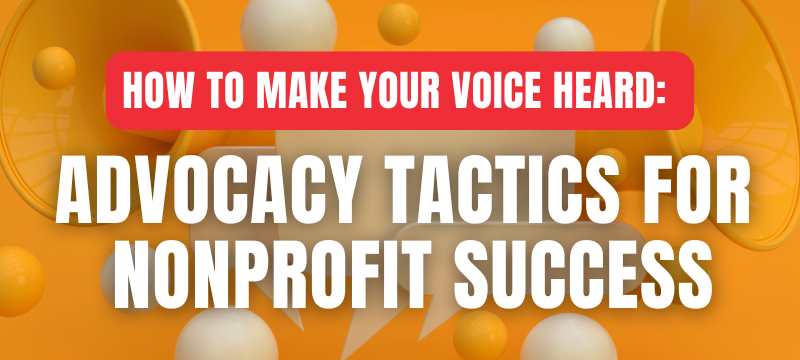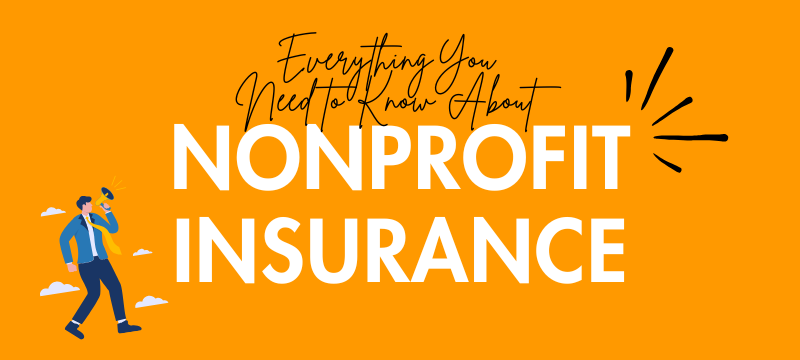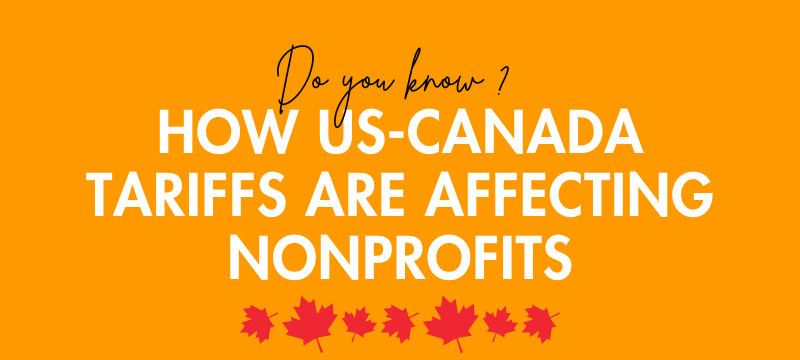Recently, I attended Welch LLP’s annual Accounting & Tax Update for Nonprofit Organizations. The event…

How to Make Your Voice Heard: Nonprofit Advocacy Strategies
In private businesses, effective marketing is essential for success—it’s how companies capture attention, build relationships, and ultimately drive action. Similarly, for nonprofit organizations, Nonprofit Advocacy Strategies serve as their version of marketing. It’s about raising awareness, mobilizing support, and influencing decision-makers to achieve their mission. Just as I’ve experienced the importance of strategic marketing in growing my own business, nonprofits must leverage these advocacy strategies to create change and secure the support they need. Whether through public campaigns, direct lobbying, or partnerships, advocacy is the key to turning their vision into reality.
In today’s increasingly complex world, nonprofit organizations play a crucial role in bridging the gap between public needs and government action. However, achieving this often requires more than just good intentions—it demands strategic advocacy efforts that capture both public and government attention. The formula is simple: getting public attention = getting government official attention = getting things done. This blog post explores how nonprofit leaders have successfully harnessed the power of advocacy to influence policy and secure critical support for their causes.
How a bold move can grab attention and drive government action
Heather Norris, the President and CEO of the Ottawa Network for Education (ONFE), is a shining example of how grassroots advocacy can lead to meaningful government action. Faced with the challenge of getting the federal government to follow through on its election promise to fund the kids’ breakfast program, Heather took a bold and highly visible approach. In early winter, she organized a run at Parliament Hill, a symbolic and attention-grabbing event designed to highlight the urgency of the issue.
Heather’s run wasn’t just about physical endurance; it was about rallying public support and putting pressure on the government. The event generated significant media coverage and public interest, ultimately leading to the federal government committing the necessary funds to the provincial government for the breakfast program. Heather’s story underscores the power of direct action and public engagement in advocacy. By capturing the public’s attention, she was able to bring the government to the table and secure funding that will positively impact thousands of children.
Leveraging high-profile events and speakers to sway political decisions
Tim Hudak, the former CEO of the Ontario Real Estate Association (OREA), demonstrated that sometimes, advocacy requires thinking big—really big. When Tim took over at OREA, he faced a daunting challenge: the loss of their role as the certification body for real estate agents in Ontario, which resulted in a 60% revenue decline. Rather than succumb to this crisis, Tim turned it into an opportunity to reimagine OREA’s role and influence.
One of Tim’s most effective strategies was organizing large-scale events featuring high-profile speakers like former U.S. President George W. Bush and Ontario Premier Doug Ford. These events were more than just networking opportunities; they were designed to draw attention from key politicians and decision-makers. The combination of high-caliber speakers and media coverage created a platform where OREA’s advocacy message could not be ignored. As a result, Tim successfully influenced legislation that benefited OREA’s members, proving that big investments in advocacy can lead to big returns.
Representing local interests to shape city policies and support industry growth
Jason Burggraaf, Executive Director of the Greater Ottawa Home Builders’ Association (GOHBA), provides another compelling case of effective advocacy at the local level. Representing local home builders, Jason has been instrumental in influencing city policies that align with the interests of his association’s members. His approach combines direct engagement with city officials and strategic public relations efforts to shape the narrative around housing development in Ottawa.
One of Jason’s key achievements was convincing the City of Ottawa to adopt more favorable policies for home builders, particularly in areas related to zoning and development regulations. By carefully framing the conversation around the economic benefits of homebuilding and its contribution to the city’s growth, Jason was able to secure policy changes that have had a positive impact on the local construction industry. This case highlights the importance of local advocacy and how it can drive significant change when done effectively.
Direct Engagement: When Hiring an Advocacy Firm is the Best Move
Sometimes, the most effective advocacy strategy involves bringing in outside expertise. One of our clients, a nonprofit organization, faced significant challenges in securing government funding to continue their mission. Realizing they needed a more robust advocacy approach, they decided to hire a professional advocacy firm. The firm employed a multi-pronged strategy that included direct conversations with government officials, targeted newspaper articles, and strategic public relations campaigns.
The result was a marked increase in government attention and, ultimately, the securing of much-needed funds to sustain the organization’s operations. This example demonstrates that while grassroots efforts are powerful, there are times when leveraging the expertise of professionals can amplify a nonprofit’s voice and ensure that it is heard by the right people.
Conclusion: Strategic Advocacy in Action
These examples illustrate that effective advocacy is not a one-size-fits-all approach. Whether through grassroots efforts, large-scale events, local engagement, or professional lobbying, the common thread is the ability to capture public attention and translate it into government action. Nonprofit organizations must continually assess their advocacy strategies and be willing to innovate, adapt, and invest in efforts that align with their mission and goals.
In today’s environment, where government grants are shrinking and corporate sponsorships are getting smaller, strategic advocacy is more important than ever. Nonprofits that can harness the power of public attention to influence policy and secure support will be better positioned to fulfill their missions and make a lasting impact. By learning from these examples, nonprofit leaders can craft advocacy strategies that not only raise awareness but also drive meaningful change.
Advocacy is to nonprofits what marketing is to businesses—a way to make an impact, gain attention, and drive change. As demonstrated by Heather Norris, Tim Hudak, Jason Burggraaf, and others, effective advocacy can significantly influence government policies and secure necessary funding. Whether through bold public actions, high-profile events, or direct engagement with government officials, the key to successful advocacy lies in getting the right attention from the right people.
For those interested in deepening their understanding of nonprofit advocacy, we are hosting a Lunch and Learn event on September 11th specifically for Ottawa Nonprofit Leaders. This event will provide practical insights and strategies to enhance your organization’s advocacy efforts. Don’t miss this opportunity to connect, learn, and empower your mission!



